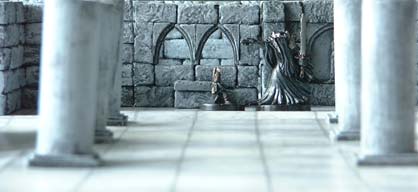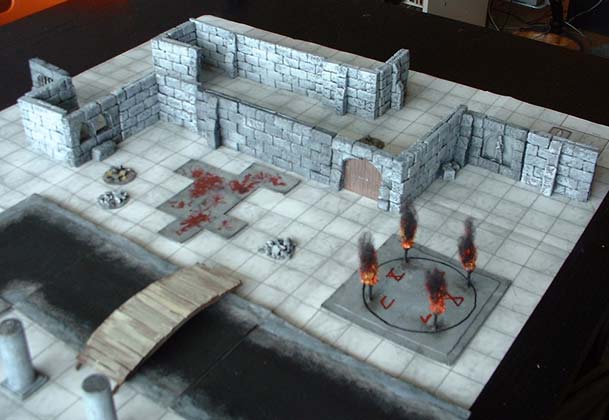This article is about basic dungeon terrains; If you have any terrains for roleplaying purposes, they are much likely to be stone wall -terrains like these!

My terrain buildling hobby began years ago, inspired by Warhammer(link is external) (which I've never actually played) and D&D 3rd edition(link is external). I had plans of creating my own miniatures from scratch(!), and in addition to them, started to create some trees, dungeon walls and miniatures. I had made some wireframe structures for miniatures and started applying filler to them - this wasn't my first time doing that, I had earlier created a model of a 20's beach scene with a lot of scratchbuilt characters in it. I had read battle descriptions of some Warhammer battles and got excited, even bought a Warhammer rulebook, but was turned down by readability and complexity issues of the old book.
The project advanced slowly. Only when cheap prepainted Dungeons & Dragons miniatures(link is external) came out, and a friend of mine decided to order a bunch, I ordered a few boxes at the same time - after which I was hooked. While I had bought the minis for RPG purposes, I got excited about the miniatures game too, and I had to collect enough miniatures to get decent warbands for each faction, including a few different leaders, and when the second set - Dragoneye - came out, I had to order a bunch of those too. Of course. Collectible games can be quite hooking.
Anyway, with appearance of DDM, my terrain building project got quite a boost. I finished my first set of terrain, self-made resin-cast dungeon walls, boosted with pillars & some DDM terrain elements (rubble, sacred circle, blood stones). While I made the tiles and other terrains myself, I'll have to say Hirst arts(link is external) was a great source of inspiration for me. I decided to go 2cm tiles instead of 1", which doomed any chance of buying later some HA molds and combine with my terrains.

I didn't paint them all at the same time, and didn't pay close attention to colors. Therefore there's some difference in wall colors.

The terrain can be used to create very atmospheric sceneries, a hall with pillars is an excellent example of this. And while I've learned to like paper terrains too, they can't reach the feel of real 3d -terrain.

Quickly made pit terrain wasn't very successful... works best as printed.